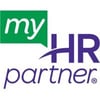We’re Benefits Experts. Here Are 5 Common Benefits Administration Mistakes Businesses Make – and How to Avoid Them.

Employee benefits are critical to the well-being of the people you hire, not to mention their families and dependents. But have you considered that employee benefits administration is equally critical to the well-being of your business?
Benefits are, after all, governed by federal and state regulations dictating everything from what you’re required to offer your employees to the manner in which your employee benefits are documented and communicated.
Put another way, overseeing medical, dental, disability, life insurance, and retirement benefits (to name just a few!) for an entire payroll’s worth of people is a heavy lift, and a high-stakes one, at that. Beyond its direct impact on employees, benefits administration, executed incorrectly, can result in fines, penalties, and legal action. Some laws under the Employee Retirement Income Security Act (ERISA) even carry criminal penalties for mistakes that are ongoing or deemed willful.
This points to the importance of knowing common employee benefits administration pitfalls so you can put resources in place to keep them at bay. Below are five employee benefits mistakes that our myHR Partner team sees most often, and steps your business can take to protect against them:
1. Not following benefit disclosure obligations
Several federal labor laws, including ERISA, ACA, and HIPAA, require employers to distribute benefit documents, disclosures, and notices to participants at specific milestones or intervals. However, it’s not uncommon for companies to miss the mark on these dates, or on the content within notices. It happens for a number of reasons:
For one, distribution requirements vary widely from one benefit to the next. Some employee benefits notices must be sent to new employees at time of hire. Sometimes only active employees need to be notified, whereas other notices must go to all participants. Some notices have to be sent 60 days before the plan year begins, others within 90 days of eligibility. Considering the volume of benefits at play, this can be a complex juggling act.
Exacerbating the issue is the existence of many lesser-known laws that have a way of getting lost in the shuffle. Take the Women’s Health and Cancer Rights Act (WHCRA), which offers protection for individuals who elect to undergo breast reconstruction in connection with a mastectomy. Under ERISA, WHCRA notices should be provided when a person enrolls in a health plan, and then once annually. However, WHCRA notices are often missed.
The first step in acing benefits disclosure obligations, then, is to ensure awareness of all possible scenarios and benefits that require employee disclosures and notices. If any of these are unfamiliar, use research to determine whether it might, in fact, be applicable, and might require communication with relevant employees:
- Summary plan descriptions (SPD)
- Summary of benefits and coverage (SBC)
- Summary annual report (SAR)
- COBRA
- Marketplace coverage options
- Genetic Information Nondiscrimination Act (GINA)
- Children's Health Insurance Program Reauthorization Act (CHIPRA)
- Michelle's Law
- Mental Health Parity and Addiction Equity Act (MHPAEA)
- Women's Health and Cancer Rights Act (WHCRA)
- Newborns' and Mothers' Health Protection Act (NMHPA)
- Medicare Part D Notice of Creditable Coverage
- Disclosure of grandfathered health plan status
Once confident in the scope of notifications at hand, employers are wise to develop a process to track and trigger necessary updates and disclosures according to required timelines, and to regularly audit documents to make sure they’re up-to-date. Even more, keep all distribution records organized and readily available – protection in the event of an audit or internal staffing changes, and simply a wise rule of thumb.
2. Not distributing materials to COBRA participants during annual open enrollment
Employers spend a lot of time and energy preparing and executing their annual benefits open enrollment –selecting the best plans, determining cost share strategy, preparing enrollment systems, and communicating details to employees. In the midst of all the busyness this period brings, COBRA participants are easily and often overlooked.
Under ERISA, employers are required to supply the same benefits materials to COBRA participants that they supply to active employees. Failure to provide COBRA participants with necessary paperwork and notifications can saddle an employer with hefty fines and penalties, and opens the door to legal action by affected participants.
To ensure compliance, develop a process to systematically add, track, and communicate with COBRA participants during annual open enrollment and across any other relevant communication.
3. Not leveraging benefit brokers' expertise and resources
The employee benefits landscape is increasingly complex and dynamic. Ever-evolving governing regulations and laws make it confusing for non-professionals to navigate.
Which leads to the underutilization of benefits brokers.
Businesses who administer their own benefits typically turn to brokers for the broker’s core purpose: To provide a menu of benefits products as well as guidance and support in selecting, negotiating, and ongoingly renewing those benefits plans.
But a broker’s involvement shouldn’t end here. Brokers are experts in benefits regulatory compliance, administration, and trends – expertise that’s available to their clients. Businesses are wise to turn to their brokers for compliance consulting and for help preparing required employee benefits documents, notices, employee communications, and presentations. Ideally, benefits brokers also offer direct benefits counseling, assistance with claims, and sometimes even a benefits administration system that their clients can use for open enrollment.
Businesses that don’t fully engage their benefits broker miss out on major opportunities to optimize and streamline both their benefits packages and the surrounding administration process.
4. Making retirement plan contribution errors
Retirement plans are governed by ERISA; 401K plan administrators need to follow the requirements exactly. Employers can’t take liberties in deciding which employees or what compensation types are eligible, or how often contributions are made.
Still, it happens. Sometimes employee eligibility is inaccurately administered. A business might assume, for example, that part-time employees are ineligible; in reality, they sometimes are. Other times employers misinterpret (or inaccurately apply) the definition of eligible compensation – an error that impacts withholding, matching, and other aspects of payroll-related retirement plan contributions. Contribution timing can be similarly mishandled. All of the above lead to time-consuming reconciliation and, in some cases, incurred taxes and penalties.
Employers should familiarize themselves with all plan documents and should ask administrators annually, at minimum, to confirm that qualified retirement plan compensation is being defined and computed accurately. Employers are also wise to develop practices and procedures to ensure retirement plan contributions are made on the earliest date they can reasonably be deposited.
5. Providing inadequate benefits-related communications
Prevalent among the four missteps outlined above are benefits communication gaps – particularly common in businesses without an internal HR benefits specialist.
Clear, thorough communication with new hires is essential. The same goes for communication during annual open enrollment. But it shouldn’t stop there. Benefits-related topics of importance (wellness education opportunities and value-adds from insurance companies, for example) occur throughout the calendar year, and need to be conveyed and managed with similar clarity. After all, benefits-related communication helps keep employees engaged and contributes to a sense of being appreciated – both of which are key to morale.
Sometimes the communication disconnect exists between the person responsible for a company’s employee benefits management and the company’s benefits broker. Most often, the problem is too little communication between an internal benefits administration appointee and employees. It’s not unheard of, for example, for necessary benefits details to be sent to employees without any follow-ups, context, or resources to help them make informed choices. Inadequate benefits communications can be detrimental to employee engagement and lead to confusion, frustrations, and overall employee dissatisfaction.
As discussed earlier, brokers can sometimes help close this communication gap. However, the most comprehensive solution is to outsource benefits to a time-proven firm like myHR Partner.
It's impossible to overstate the value and ease of working with myHR Partner – and the extent to which myHR Partner can protect your business against costly benefits administration errors.
myHR Partner can handle every facet of benefit administration on your business’s behalf – which includes communication with all of your chosen benefits carriers, brokers, agencies, and consultants. And, most importantly, your employees.
Ready to hand off benefit administration to experts who know the ropes – and who administer them meticulously, offering your employees the best benefits experience and helping your company stay compliant? Reach out today for a free myHR Partner consultation.
Topics discussed
Related Posts


